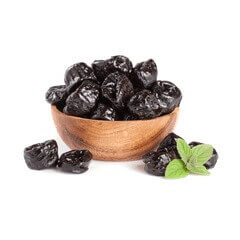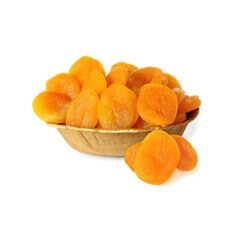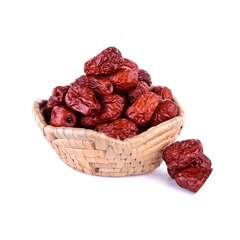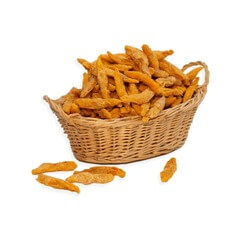Do you eat dried fruits? Do you know their benefits? In this article, we have sought to enlighten you on the benefits of these foods that constitute real nutritional concentrates.
Contents
Why Are The Nutritious Dried Fruits Recommended?
Characteristics of dried fruits.
The advantages of dried fruits.
The Benefits of Dried Fruits: A Nutritional Perspective.
Comparing Nutrient Concentration: Fresh vs. Dried Fruits.
The Nutritional Profile of Dried Fruits.
Navigating Nutrient Density and Considerations: Dried Fruits and Health Awareness
Nutritional Advantages and Athletic Potential of Dried Fruits.
Characteristics of Dried Fruits
There are two types of dried fruit: naturally dried fruit such as oilseeds or nuts (almonds, peanuts, hazelnuts, walnuts) and dehydrated fruit (apricots, figs, dates, pineapple, grapes). These foods have become popular snacks due to their high fibre and good lipid content, which can help regulate blood pressure and lower cholesterol. In fact, some dried fruits have more protein than certain meats. Consult your sports coach to learn more.
The Advantages of Dried Fruits
Dried fruits from the oilseed family are excellent for health. Because they are high in fibre, it aids digestion. These foods are also rich in fatty acids, which ensure the proper functioning of the brain. It should be noted that these dried fruits are particularly caloric and rich in lipids. Therefore, consuming them in reasonable quantities and in their unsalted version is essential.
Dried fruit is also incredibly delicious and healthy. The raisin is one of the best! Low in calories, it is rich in iron, vitamins and minerals. In general, dried fruits are rich in vitamins and minerals. Their taste is more intense, and their texture is different from fresh fruit.
The Benefits of Dried Fruits: A Nutritional Perspective
Dried apricots and companies often get bad press, too high in calories, etc. Even though they are a real reservoir of good things, let’s get to know them and eat them well!
Ancient Preservation Technique: Dried Fruits through the Ages
Preservation by drying fruits, such as apples, peaches, plums, grapes and figs, has been used since the earliest times.
Versatility of Dried Fruits
Dried fruits are used in a variety of ways and are an attractive category among foods.
Dispelling Misconceptions: Unveiling the Nutritional Truth
According to a widespread opinion, dried fruits, especially those coming from a vine, such as raisins, are of high nutritional value and particularly rich in Iron. Neither of these two assertions is valid. The nutrient content of dried fruits cannot be higher than that of the initial fresh fruit.
The error comes from comparing the same given weight of fresh fruit and dried fruit, forgetting that it is necessary to use 40 to 50 ml of fresh grapes to obtain 10 ml of raisins.
Comparing Nutrient Concentration: Fresh vs. Dried Fruits
In some cases, it is nevertheless true that the iron content of dried fruits is slightly higher than can be expected from the fact that they are more concentrated.
And taking into account the increase in concentration without an increase in the number of nutrients due to drying, the actual nutritional value of dried fruits is lower than that of fresh fruits.
Dried fruits combine all the nutrients of fresh fruit in a small volume.
Rich in carbohydrates and B vitamins, they contain many minerals (potassium, calcium, magnesium, Iron). Dried fruits provide 3 to 5 times more minerals than fresh fruits.
The higher fibre concentration than in fresh fruit promotes the elimination of bile acids and cholesterol Note that the fragility of vitamin C means that it is virtually absent from dried fruit (except bananas).
The Nutritional Profile of Dried Fruits
The richest in potassium and sodium are dried apricots. The dried banana is the richest in magnesium. The richest fig in calcium.
The Date is recommended for its low fat and high fibre content. Source of Iron, the date allows you to increase your iron intake and is therefore particularly recommended for women who have iron deficiencies.
Dried apricot, a record holder of potassium and provitamin A, also contains Iron as well as vitamins B3 to E.
Raisins are rich in vitamin B2, favourable to growth, good organ development, and healthy condition of the skin and mucous membranes.
Tips for Consumption
Play on their taste diversity by consuming them in small quantities at different times of the day: at breakfast or as a snack.
Pairing Pleasures: Enjoying Dried Fruits with Fruits and Vegetables
A good way to eat dried fruits is to pair them with raw or cooked fruits and vegetables. Some mixtures give excellent results.
Smart Snacking: Portioning and Packing Dried Fruits
So for snacks, make 40 g portions and place them in small sachets.
Navigating Nutrient Density and Considerations: Dried Fruits and Health Awareness
By definition, they have a low water content, so they are a concentrate of trace elements but also of sugars and calories!! Beware of the weight gain that regular consumption of these fruits could cause. Also, be careful in diabetics or in cases of dyslipidemia.
A distinction is made between soft dried fruits which are dried on racks or on the tree: dried apricots, raisins, figs, dried bananas, dried pears, prunes, dates, apples, etc. Oily dried fruits with shells such as almonds, walnuts, or pistachios.
Average nutritional composition for 100g:
Calories: 180 to 320 kcal
Proteins: 1.2 to 4 g
Lipids: 0.2 to 0.6 g
Carbohydrates: 40 to 76 g
Fibres: 5 to 14 g
Nutritional Advantages and Athletic Potential of Dried Fruits
The higher fibre concentration than in fresh fruit promotes the elimination of bile acids and cholesterol.
The quantities of minerals, such as calcium, potassium, Iron etc., are multiplied by 3 to 5 compared to fresh fruit.
Note that the fragility of vitamin C means that it is almost absent from dried fruits (except bananas).
Under a low volume, we notice the richness in carbohydrates which is used by athletes during or after exercise (mountain biking, walking, hiking, marathon, etc.). The most caloric are raisins (320), followed by dates (300).
The richest in potassium and sodium are dried apricots.
The dried banana is the richest in magnesium.
The richest fig in calcium.
For premium-quality Basmati rice, nuts, seeds, and dried fruits, consider visiting the ADNOOR website. With 25 years of experience as importers, exporters, wholesalers, distributors, and co-packers of various nuts and grains in Canada, ADNOOR is Canada’s leading wholesale rice supplier.
CALL US AT +1 (647) 897-8959
REQUEST A QUOTE info@adnoor.ca







